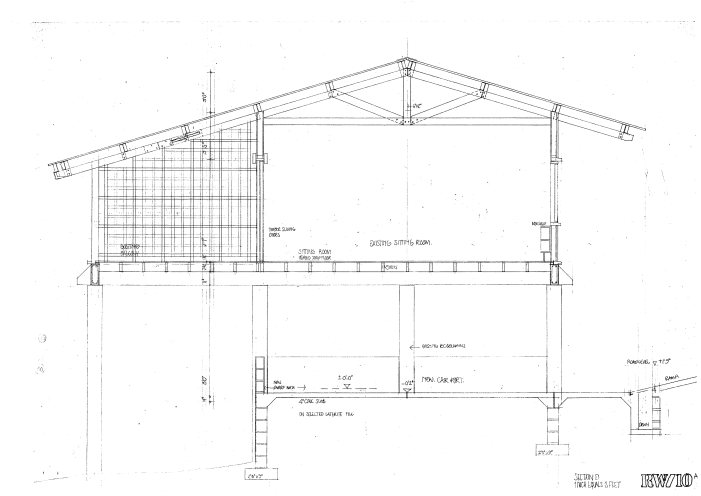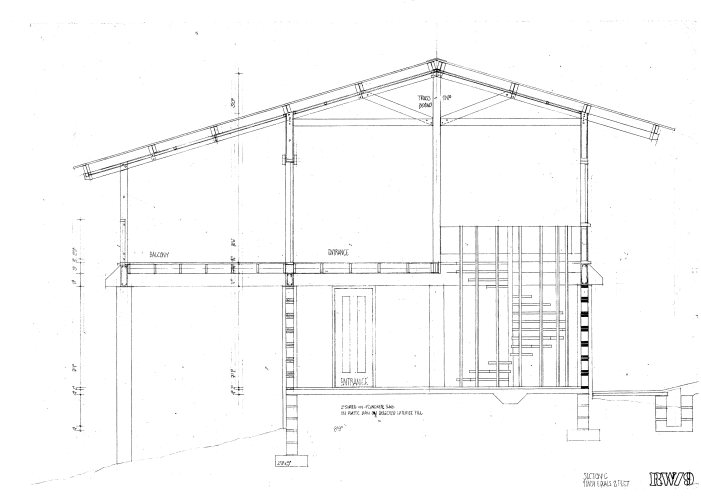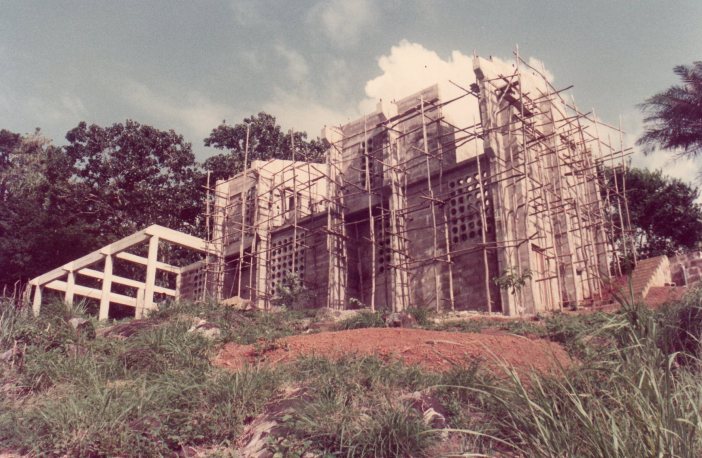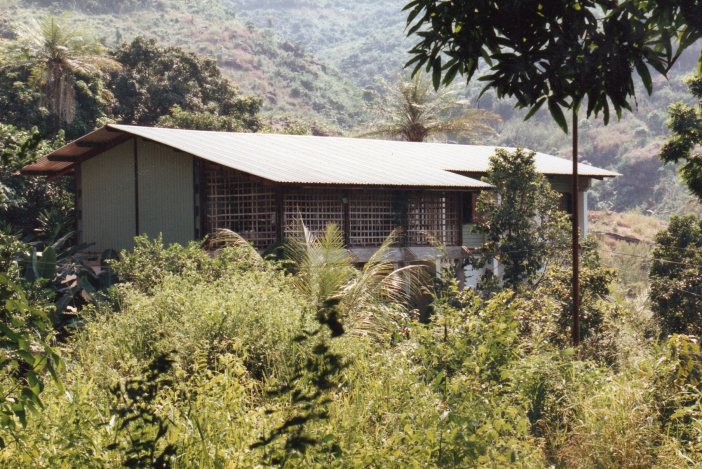In 1982, my wife and I decided that we would be staying in Freetown for the foreseeable future and thought therefore that it would be best if we built a house. We purchased some land on the side of a hill below Hillcot Road on the outskirts of town and I embarked on the design of the house.
The site sloped quite steeply down to the south with views over Freetown and consisted mainly of granite rock with patches of top-soil. It was important therefore to design the house so that there was the minimum of excavation for foundations.
The climate in Freetown (which is only 8° north of the equator) is hot and humid for most of the year with heavy rains during the rainy season which lasts from June to the end of September. The house had to be designed in such a way therefore that it could cope with this climate without having to use air-conditioning while still providing a comfortable living (and sleeping) environment. It was therefore located across the top of the site facing south in order to reduce solar penetration into the rooms and was one-room deep in order to maximise cross-ventilation, with the result that it was long and narrow.
I decided to place the main living and sleeping accommodation on the first floor to make the most of the breezes from the south-west and of the views to the south and also to improve security to these areas. All living and sleeping rooms had louvred shutters with mosquito screens (there were no glazed windows in the house) to provide maximum ventilation.
Initially on the ground floor there was a double car-port under the first floor sitting room; the main entrance into the house; a spiral staircase leading up to the first floor; a large store; two bedrooms and a toilet and separate shower. The bedrooms had louvred shutters to both sides of the rooms to provide cross-ventilation and ‘clostra’ block screens externally to provide security.
On the first floor, the spiral staircase led to a large (20’ 0” x 30’ 0”) sitting room with a large balcony in front (11’ 0” x 30’ 0”) and this balcony became our main living space. A long kitchen divided the living accommodation from the first floor bedrooms. It was open at both ends with clostra blocks for ventilation and at the northern end there was a charcoal-burning stove (with a hood and chimney) for use when bottled gas was not available (which was quite often!) and this proved to be invaluable. Past the kitchen was a room that was originally intended to be a study/office, a toilet and then our bedroom with an en-suite shower. Both of these rooms had louvred shutters to both sides.
Externally on the ground floor there was a utility room and toilet and a tank-stand with a hot water tank which was supplied by a solar water heater. I explored the use of solar panels for providing electricity but at that time they were too expensive to use.
Soon after we moved in, I constructed an office on the ground floor in place of one of the car-port bays and converted the first floor study into a bedroom for our children.
The construction of the house was a mixture of reinforced concrete, rendered blockwork and timber-framing with external cladding of ‘colour-bond’ roof sheet panels. A reinforced concrete ring beam at first floor level was supported on blockwork walls at the bedroom end and on large, round reinforced concrete columns anchored into the rocks at the living room end. The first floor was constructed of timber joists sitting on a rebate in the concrete ring beam and supporting tongued and grooved timber boarding. The first floor walls at the bedroom end were of rendered blockwork with louvred shutters and roof-sheet panels below. The sitting room and balcony were constructed of timber frames with louvred shutters to one side of the sitting room and large sliding doors opening on to the balcony. The balcony had full-height open timber screens to three sides for ventilation and security and the end wall was timber-framed with roof-sheets as the finish externally.
At the bedroom end, the first floor cantilevered out over the ground floor in order to provide some protection from the rain to the ground floor walls and all of the first floor rooms had very large roof overhangs (6’ 0”/1.8 metres) to provide protection to walls and windows from the sun and rain for both comfort and to reduce maintenance costs.
The combination of large roof overhangs and rooms with large amounts of cross-ventilation provided very comfortable living and sleeping spaces and we never felt the need for air-conditioning. The large roof overhangs also reduced the need for maintenance as can be seen from the fact that, when I visited the house some 25 years after it was built, the paintwork still looked good even though it had never been re-painted!
All of the large aggregate for the concrete was broken by hand on site. The timber used for the timber framing, the roof, the timber window panels and the first floor was sourced from a small timber mill up-country and was a very hard wood that is resistant to termites and is used for railway sleepers in Ghana. Very hard and very difficult to work with but will last for ever!
The house was constructed using direct labour. I employed artisans and labourers to do most of the heavy work managed and supervised by myself. I did a lot of the work myself such as laying and fixing all of the tongued and grooved floor boards, fixing the roof sheets, the first-fix plumbing, tiling the walls and most of the painting. Every architect should if possible build a house as it teaches you a lot, especially in developing countries, about what is and what is not possible!
Below you will see the original drawings, progress photographs and photographs of the finished house.

Site plan

Ground floor plan

First floor plan

Section through sitting room, balcony and car-port

Section through the entrance and staircase

Section through kitchen

Section through bedrooms

Section through bathrooms

View from below the bedrooms during construction

Bedrooms under construction with the water tank stand to the right

Timber framing started to the living room and balcony

Timber framing in progress to the living room and balcony

Floor boards in progress in the sitting room

The architect fixing roof sheets!

The house from the south after completion

The entrance to the site after completion of the house

The bedrooms from below

The bedrooms from the north side

The architect in his office

The children with friends in the sitting room

and on the balcony

The house a few years after construction
Beautiful composition and story!